Happy Carldays!
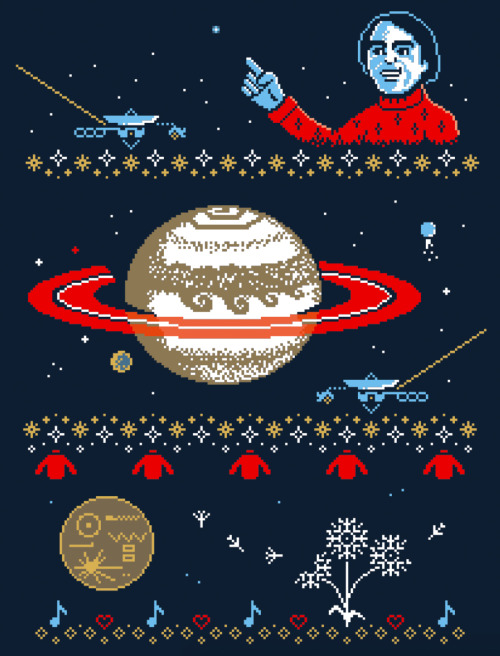
Happy Carldays!
Sweatshirts available through December at TeeFury.
by Pacalin
More Posts from Thebryanscout and Others
Me af
when the relatives are over
“so how are you going with your studies”

“have you found a job yet”

“got a special someone in your life? ;)”


Vintage Spaceships Mini Poster







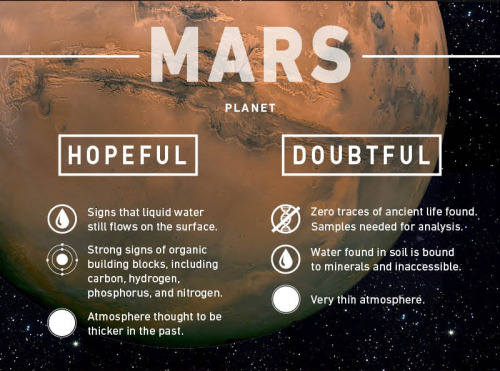
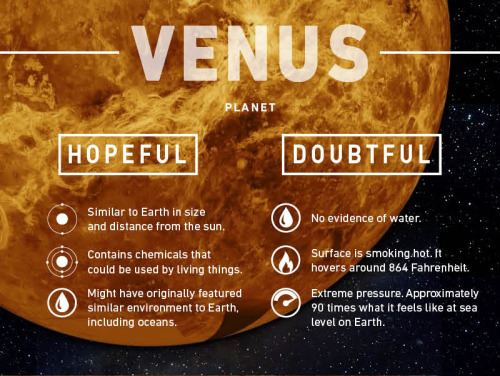
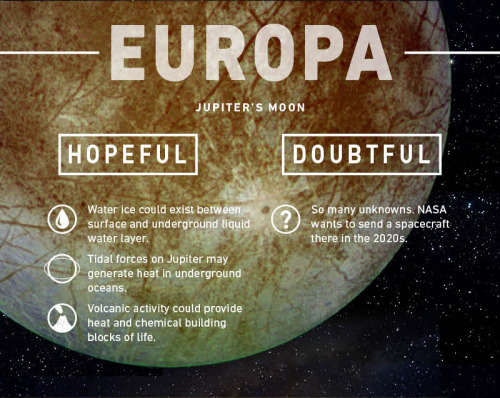
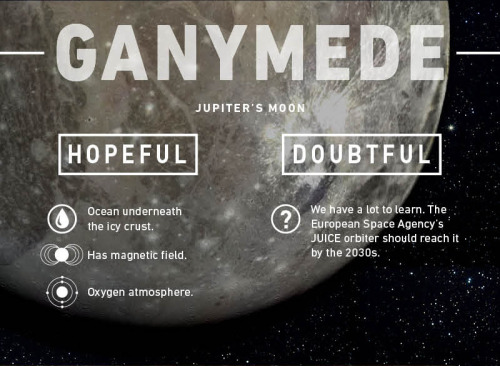



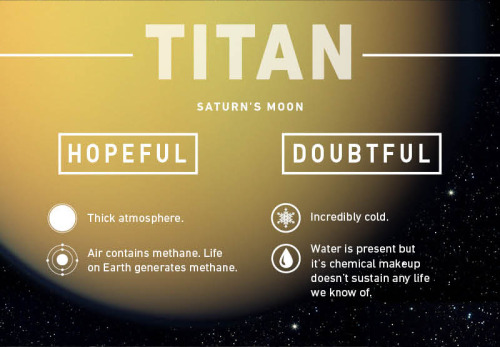
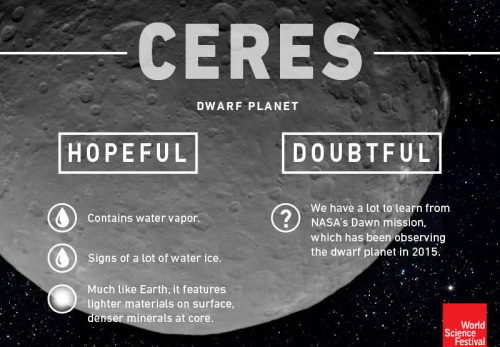
Where Could Life Exist?
When NASA scientists announced earlier this year that they had found evidence of liquid water on Mars, imaginations ran wild with the possibility that life could exist somewhere other than here on Earth.
Scientists continue to explore the possibility that Mars once looked a lot like Earth — salty oceans, fresh water lakes, and a water cycle to go with it. That’s exciting stuff.
So where else are they looking? What exactly are they looking for?
There are nine places in our universe where scientists say life is a possibility. The locations range from a smoking hot planet like Venus to a moon that orbits Saturn called Enceladus, which looks a lot like a massive, tightly-packed ball of ice.
All of these places show signs that water is, or at least was, a possibility. They also appear to feature some kind of energy that could produce heat.
full resolution

The Big Bang Theory Merchandise: http://bit.ly/1aAdDNX

Behold Tharsis Montes, three massive shield volcanoes in the Tharsis region of Mars. In this illustration by Dutch artist Kees Veenenbos, using data from NASA’s Mars Orbiter Laser Altimeter, we can see the volcanoes Arsia Mons, Pavonis Mons and Ascraeus Mons, southwest to northeast.
(Space 4 Case)
I once discussed with some rightwinged people about ethnicity. And they said that blacks were a "subhuman" race because they are "obviously" less intelligent than other ethnic groups and that they never invented something or had a culture as Europeans or Persian cultures. But I honestly didn't have a good answer. Do you have some resources on why blacks haven't made such things in comparison to other ethnic groups?
I’m not going to pretend that I’m surprised or shocked to hear this because I, too, live in America, and have encountered this from Conservative Republicans aka Conservative Christians aka Evangelicals aka oblivious racists who claim they aren’t racist because they either have a black friend or have / “know” (talk to, from time to time) some black people in their lives (who have absolutely no idea how racist they are because the don’t actually “know” them, they simply hold basic, watered-down conversations with no substance that allows said white person to be chummy without actually divulging anything about themselves. That being said…
Point any racist but “totally not racist” people to the ‘List of African-American inventors and scientists’ on Wikipedia; The Black inventor Online Museum because that’s a thing; and I also recommend Kareem Abdul-Jabbar’s beautiful and enlightening kid-friendly book ‘What Color Is My World? The Lost History of African-American Inventors’ (image below):

Share with them the ‘History of science and technology in Africa’ on Wikipedia; and for those you encounter who know that there are such things as libraries and museums but can’t seem to you know, make an effort to actually visit them, there’s a resource for that provided by the Institute of Museum and Library Services called, appropriately, ‘The Digital Public Library of America’ which permits you to look up local libraries nearest you via address or zip code.

Find Your Library (alternative sources here, here, and here)
Below are some recommended educational programs I highly recommend as well, for the “visual learner”….






FIRST PEOPLES (PBS)
See how the mixing of prehistoric human genes led the way for our species to survive and thrive around the globe. Archaeology, genetics and anthropology cast new light on 200,000 years of history, detailing how early humans became dominant.
Review here.

BECOMING HUMAN (NOVA)
Nothing is more fascinating to us than, well, us. Where did we come from? What makes us human? An explosion of recent discoveries sheds light on these questions, and NOVA’s comprehensive, three-part special, “Becoming Human,” examines what the latest scientific research reveals about our hominid relatives—putting together the pieces of our human past and transforming our understanding of our earliest ancestors.
Featuring interviews with world-renowned scientists, each hour unfolds with a CSI-like forensic investigation into the life and death of a specific hominid ancestor. The programs were shot “in the trenches” where discoveries were unearthed throughout Africa and Europe. Dry bones spring back to life with stunning computer-generated animation and prosthetics. Fossils not only give us clues to what early hominids looked like, but, with the aid of ingenious new lab techniques, how they lived and how we became the creative, thinking humans of today.
Review here.



THE INCREDIBLE HUMAN JOURNEY (BBC)
A five-episode, 300 minute, science documentary film presented by Alice Roberts, based on her related book. The film was first broadcast on BBC television in May and June 2009 in the UK. It explains the evidence for the theory of early human migrations out of Africa and subsequently around the world, supporting the Out of Africa Theory. This theory claims that all modern humans are descended from anatomically modern African Homo sapiens rather than from the more archaic European and Middle Eastern Homo neanderthalensis or the indigenous Chinese Homo pekinensis, and that the modern African Homo sapiens did not interbreed with the other species of genus Homo. Each episode concerns a different continent, and the series features scenes filmed on location in each of the continents featured.
Related review of Alice Roberts’ book by the same name of which this program was adapted, here.


ORIGINS OF US (BBC)
Science series telling the story of human evolution through changes in human anatomy, examining how the human body has adapted through seven million years of evolution.


PREHISTORIC AUTOPSY (BBC)
A journey into our evolutionary past, piecing together the bodies of our prehistoric family, discussing the remains of early hominins such as Neanderthals, Homo erectus, and Australopithecus afarensis.
‘CHILDREN OF AFRICA (THE STORY OF US)’ (melodysheep)
With referenced material from BBC Incredible Human Journey, BBC Ascent of Man, BBC Life of Mammals, BBC Human Planet, BBC Walking With Cavemen, and excerpts from various lectures, ‘Children of Africa’ is a musical celebration of humanity, its origins, and achievements, contrasted with a somber look at our environmentally destructive tendencies and deep similarities with other primates. Featuring Jacob Bronowski, Alice Roberts, Carolyn Porco, Jane Goodall, Robert Sapolsky, Neil deGrasse Tyson and David Attenborough.


ORIGINS: THE JOURNEY OF HUMANKIND (NATIONAL GEOGRAPHIC)
Hosted by Jason Silva, Origins: The Journey of Humankind rewinds all the way back to the beginning and traces the innovations that made us modern.
Related interview/reviews here, here, here, and here.
‘ORIGINS’ ANNOUNCEMENT TRAILER PRODUCED BY MELODYSHEEP
Of course, I could go on and on and on referencing various resources to provide people who have unintentionally “inherited” this perspective or who are stuck in a feedback loop within their echo chamber of ignorance, but let’s be honest, the only thing that can actually influence impactful change into a racist person’s mind is the will to self educate, and personal human experience obtained from intimate conversation with diverse ethnicities and cultures. I do hope this helps.



1975 NASA concept art by Don Davis takes us to a future space colony in the form of a “Stanford torus” that can house tens of thousands of humans. It was first proposed in a 1975 NASA study at Stanford University where experts gathered to speculate on designs for future space habitats. Using centrifugal force, a doughnut-shaped torus structure that is 1.8 km in diameter could rotate once per minute to provide between 0.9g and 1.0g of artificial gravity on the inside of the outer ring. A system of mirrors would direct sunlight to the interior to make it the well-lit paradise you see here. (NASA)
I do believe – and I may still be in a minority on this – that Trump and the rise of an authoritarian government has changed the rules of engagement, and that journalists are going to need to figure out a more aggressive, albeit creative, response. I’m eager to work on new ways to fight back. But journalists aren’t going to save ourselves from the Trump onslaught. In launching this war, Trump and his right-wing allies know that the media can look embarrassingly defensive when we’re under attack. Indeed, they’re hoping to goad the media into the kind of responses they believe will whip up even more anger among their core supporters. If the 1st Amendment survives this threat, it will only be with support from everyday people. Journalists just aren’t going to march for our rights that way that women, immigrants, and even scientists have done or will do under Trump, but regular citizens can pick up the slack to remind the government – and their neighbors – that a free press is a fundamental American right and that regular people even support the 1st Amendment as enthusiastically as Elk County hunters back the 2nd. The president’s remarkable words of the last few days are essentially asking you, the American people, to choose a side. That doesn’t mean loving everything the media does; God knows I’ve used Attytood as a platform to criticize the New York Times, CNN and others – but only because I want a tough and fair-minded press to do better. That 1st Amendment ideal is tonight facing its gravest threat yet. The months ahead will determine whether an independent media will be the ones working, imperfectly, toward finding and sharing a real and objective truth, or whether the terms and conditions of reality will be set by an all-powerful Trump government.
Journalists can’t save a free press in Trump’s America. Only you can
(via dendroica)
This is not hyperbole. Never in history has it been more clearer a time for collaboration and agreement on what kind of future we must commit to fight for.
(via sagansense)

-
 prndandroid liked this · 5 months ago
prndandroid liked this · 5 months ago -
 thanatologicum-amorem reblogged this · 2 years ago
thanatologicum-amorem reblogged this · 2 years ago -
 thanatologicum-amorem liked this · 2 years ago
thanatologicum-amorem liked this · 2 years ago -
 legendaryrodent liked this · 5 years ago
legendaryrodent liked this · 5 years ago -
 burgerkingwhooper liked this · 5 years ago
burgerkingwhooper liked this · 5 years ago -
 destroyeeer reblogged this · 6 years ago
destroyeeer reblogged this · 6 years ago -
 deals-n-business liked this · 6 years ago
deals-n-business liked this · 6 years ago -
 marfaaw-blog liked this · 6 years ago
marfaaw-blog liked this · 6 years ago -
 astronautf liked this · 6 years ago
astronautf liked this · 6 years ago -
 pigeonpartycorps liked this · 6 years ago
pigeonpartycorps liked this · 6 years ago -
 masterofpuppets1981 liked this · 6 years ago
masterofpuppets1981 liked this · 6 years ago -
 thevideomaker reblogged this · 7 years ago
thevideomaker reblogged this · 7 years ago -
 whalienv52 reblogged this · 7 years ago
whalienv52 reblogged this · 7 years ago -
 footnoteinhistory liked this · 7 years ago
footnoteinhistory liked this · 7 years ago -
 whats-up-gargarin reblogged this · 7 years ago
whats-up-gargarin reblogged this · 7 years ago -
 vienasie reblogged this · 7 years ago
vienasie reblogged this · 7 years ago -
 sayop liked this · 7 years ago
sayop liked this · 7 years ago -
 menezesjoyjoy-blog liked this · 7 years ago
menezesjoyjoy-blog liked this · 7 years ago -
 aobajohsike liked this · 7 years ago
aobajohsike liked this · 7 years ago -
 esamifeer reblogged this · 7 years ago
esamifeer reblogged this · 7 years ago -
 bleach-insecticide liked this · 7 years ago
bleach-insecticide liked this · 7 years ago -
 angelswings318 liked this · 7 years ago
angelswings318 liked this · 7 years ago -
 linyeralunar reblogged this · 7 years ago
linyeralunar reblogged this · 7 years ago -
 unknow7great-blog liked this · 7 years ago
unknow7great-blog liked this · 7 years ago -
 losthecanvas reblogged this · 7 years ago
losthecanvas reblogged this · 7 years ago -
 frankesntein liked this · 7 years ago
frankesntein liked this · 7 years ago -
 hydrocarbonation liked this · 7 years ago
hydrocarbonation liked this · 7 years ago -
 the-ibella2 reblogged this · 8 years ago
the-ibella2 reblogged this · 8 years ago -
 the-ibella2 liked this · 8 years ago
the-ibella2 liked this · 8 years ago -
 mannycristo liked this · 8 years ago
mannycristo liked this · 8 years ago -
 ghostowlattic liked this · 8 years ago
ghostowlattic liked this · 8 years ago -
 rinmoon7 reblogged this · 8 years ago
rinmoon7 reblogged this · 8 years ago -
 haruumaaa liked this · 8 years ago
haruumaaa liked this · 8 years ago -
 fabula liked this · 8 years ago
fabula liked this · 8 years ago -
 veecee1929-blog liked this · 8 years ago
veecee1929-blog liked this · 8 years ago -
 this--is--a--story liked this · 8 years ago
this--is--a--story liked this · 8 years ago -
 baconator902 liked this · 8 years ago
baconator902 liked this · 8 years ago -
 johannesenna liked this · 8 years ago
johannesenna liked this · 8 years ago -
 polarissketches liked this · 8 years ago
polarissketches liked this · 8 years ago -
 multiple-tale liked this · 8 years ago
multiple-tale liked this · 8 years ago -
 fragglesandfriggles liked this · 8 years ago
fragglesandfriggles liked this · 8 years ago -
 electra-lov-ing liked this · 8 years ago
electra-lov-ing liked this · 8 years ago
21, He/Him/His, lover of all things space, aviation, alt music, film, and anime
255 posts